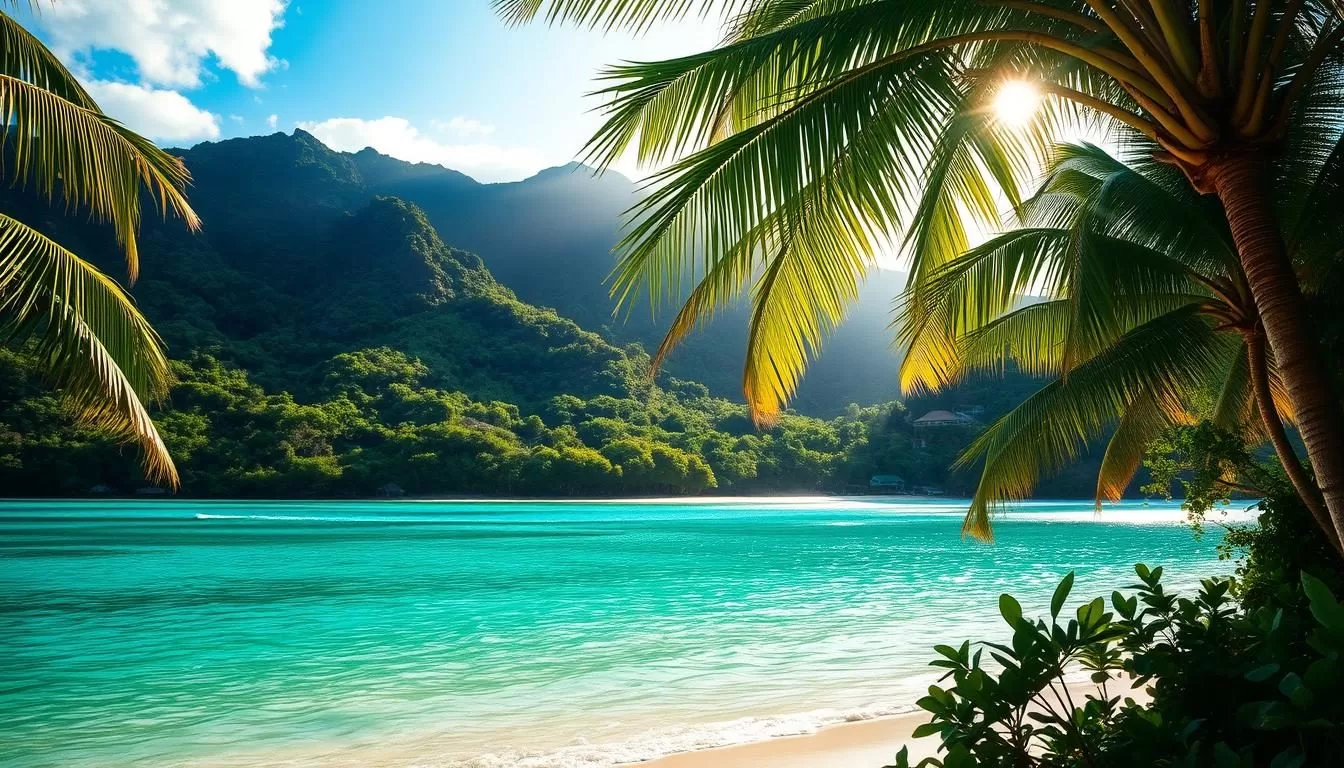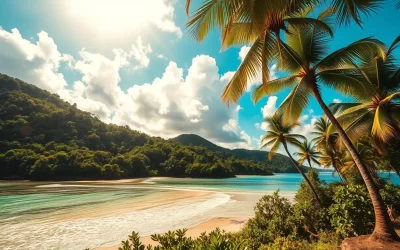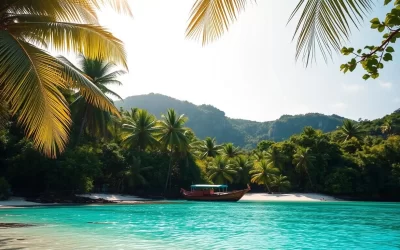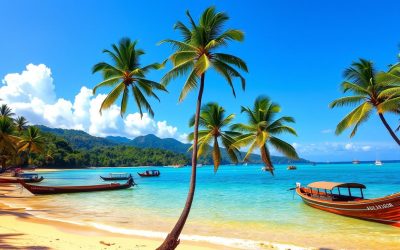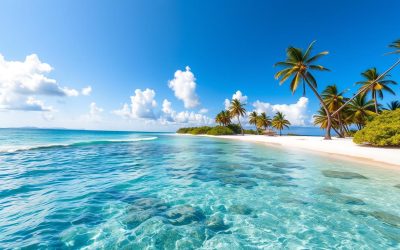You’re about to embark on a journey to a tropical paradise that combines natural beauty with Indian heritage. The best time to visit this archipelago of 572 islands can make all the difference between a rain-soaked disappointment and a sun-kissed adventure.
The period between October and May is generally considered the sweet spot for visitors, offering pleasant weather and accessible activities. During this time, you can enjoy the islands’ renowned water sports and outdoor activities, making the most of your trip to this stunning destination.
By understanding the time of year that suits your preferences, you can experience the best that the Andaman and Nicobar Islands have to offer. Whether you’re a water sports enthusiast, a beach lover, or a cultural explorer, timing your visit right is crucial.
Understanding Andaman’s Tropical Climate
Understanding the tropical climate of Andaman is essential for planning a trip that suits your preferences. The Andaman and Nicobar Islands, located in the Bay of Bengal, experience a tropical climate that remains warm throughout the year, with temperatures ranging between the mid-20s and high-30s Celsius.
The Year-Round Weather Patterns
The archipelago’s tropical climate creates a year-round warm environment. You’ll experience high humidity levels throughout the year, but the sensation varies dramatically between the dry season’s comfortable warmth and the monsoon’s heavy, muggy air.
- The islands’ location in the Bay of Bengal means they’re influenced by both the southwest and northeast monsoons, creating a unique rainfall pattern.
- The tropical climate nurtures lush vegetation across the islands, creating vibrant green landscapes.
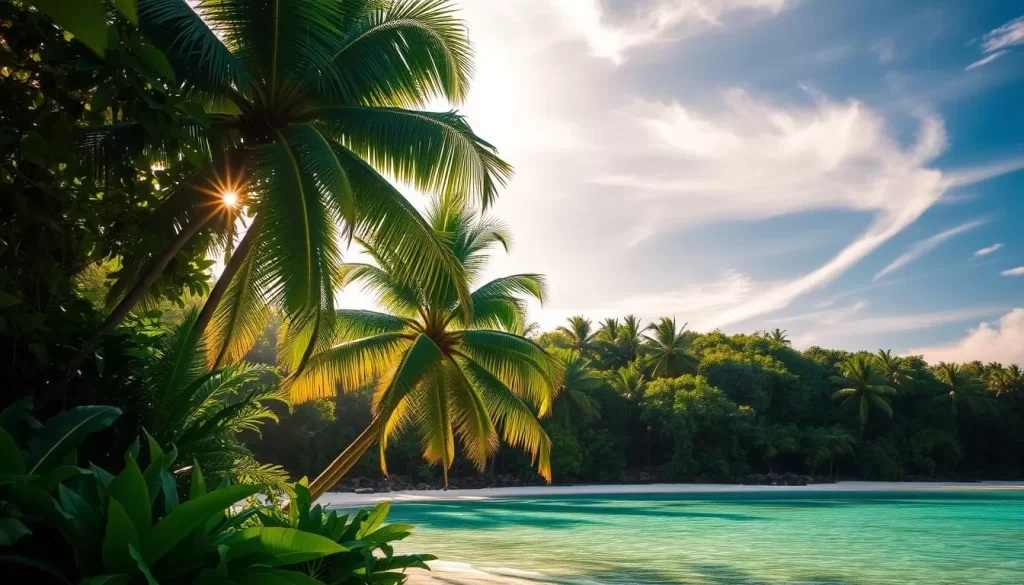
Three Distinct Seasons to Plan Around
The Andaman and Nicobar Islands experience three distinct weather patterns: the dry winter season (October to February), the hot summer season (March to May), and the wet monsoon season (June to September).
Understanding these seasonal variations is crucial for planning your perfect Andaman getaway, as each season offers a completely different experience of the islands. You’ll need to consider the time of year and how the weather might impact your activities and enjoyment.
Andaman and Nicobar Islands (UT), India: Best Months for a Weather-Savvy Trip
Planning a trip to the Andaman and Nicobar Islands requires understanding the best time to visit for an unforgettable experience. The archipelago’s unique charm is best appreciated when the weather is favorable.
October to March: The Ideal Weather Window
The ideal period to explore this stunning archipelago is between October and March, when the weather is at its best, ensuring an unforgettable adventure. Post-Monsoon Bliss: After the monsoons, the islands transform into a lush paradise. The rejuvenated landscapes, vibrant with greenery, set the stage for an unforgettable holiday.
- October through March offers the most reliable weather for your Andaman adventure.
- Daytime temperatures hover pleasantly between 23°C and 31°C, ideal for both beach relaxation and exploring the islands’ natural beauty.
| Month | Temperature Range (°C) | Weather Conditions |
|---|---|---|
| October | 24-30 | Post-monsoon, lush greenery |
| November | 23-31 | Clear skies, gentle breezes |
| December | 22-29 | Cooler evenings, ideal for outdoor activities |
Shoulder Seasons: April-May and September
The shoulder seasons of April-May and September offer an excellent compromise between good weather and smaller crowds. 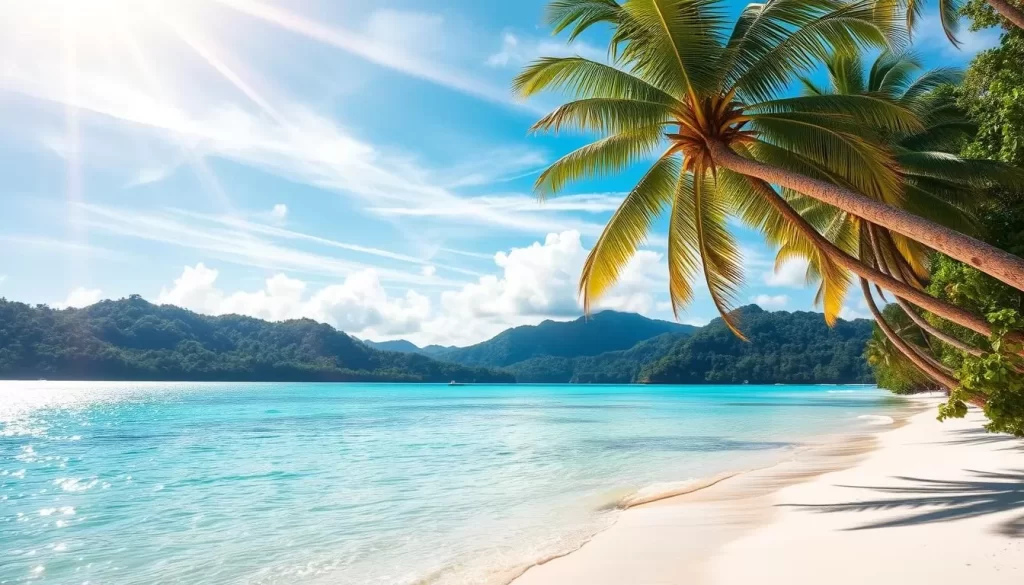 April and May bring warmer temperatures but still maintain relatively dry conditions, perfect for water activities.
April and May bring warmer temperatures but still maintain relatively dry conditions, perfect for water activities.
- September marks the transition from monsoon to dry season, offering increasingly stable weather patterns.
- These months provide the advantage of lush, green landscapes before the peak tourist influx.
During these optimal months, you’ll enjoy longer daylight hours, giving you more time to explore the islands’ numerous attractions and maximize your vacation experience.
Month-by-Month Weather Guide to Andaman
To make the most of your trip to Andaman, it’s essential to know the weather patterns month by month. The Andaman Islands, with their tropical climate, offer a diverse range of experiences throughout the year. Understanding the seasonal variations will help you plan your activities and make the most of your visit.
Winter Season: November to February
The winter season in Andaman, spanning from November to February, is characterized by pleasant weather, making it an ideal time for tourists. During these months, the temperature ranges from 23°C to 30°C, with low humidity and clear skies. November marks the beginning of the tourist season as the monsoon fully recedes, offering stable weather conditions perfect for water sports and island hopping. December and January are particularly popular, with cool evenings and warm days, ideal for outdoor activities. The visibility during these months is excellent, making it a great time for scuba diving and snorkeling.
You’ll experience the most pleasant conditions during this time, with minimal rainfall and comfortable temperatures. It’s the best time to enjoy the beaches, go on treks, or simply relax in the serene environment. The weather during February remains pleasant, with temperatures ranging from 23°C to 30°C, making it a great time to visit before the summer season begins.
Summer Season: March to May
The summer season in Andaman starts in March and continues until May. During this period, the temperature gradually rises, reaching a maximum of 33°C in April, which is the hottest month. While the heat can be intense during the midday, the mornings and late afternoons are still pleasant, making it suitable for outdoor activities. The water temperature remains pleasant, perfect for extended swimming and diving sessions. March and April are relatively dry, but May begins to see occasional pre-monsoon showers, signaling the approaching monsoon season.
Despite the rising temperatures, the summer season has its advantages. The islands are less crowded compared to the peak winter months, and you can enjoy a more relaxed atmosphere. It’s also a good time to experience the local culture, with festivals like Shiv Ratri and Holi adding to the vibrancy of the islands.
Monsoon Season: June to September
The monsoon season in Andaman, which lasts from June to September, is characterized by heavy rainfall, strong winds, and rough seas. July and August are typically the wettest months, with significant rainfall and high humidity. While the monsoon transforms the islands into a lush green paradise, many water sports operators close or limit their activities due to the unpredictable weather conditions. Ferry services between islands may also face disruptions.
However, the monsoon season is not entirely devoid of charm. September represents a transition period where the rainfall begins to decrease, offering glimpses of improving conditions. If you’re looking for a more secluded experience and don’t mind the occasional rain shower, the tail end of the monsoon season can be a good time to visit. The temperatures during this time range from 24°C to 29°C, making it relatively pleasant.
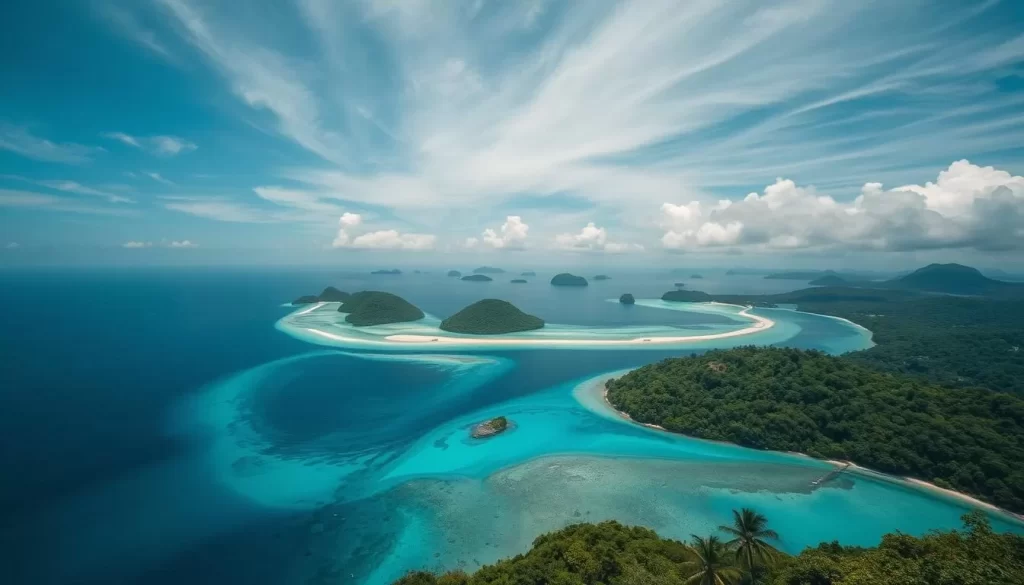
Best Time for Water Adventures in Andaman
To make the most of your water adventures in Andaman, understanding the best time to visit is essential. The Andaman Islands offer a paradise for water enthusiasts, with activities ranging from scuba diving and snorkeling to various water sports and beach activities.
Scuba Diving and Snorkeling: When to Experience Crystal Clear Waters
The dry season in Andaman Islands, from October to May, provides the best conditions for scuba diving, with clear waters, calm seas, and minimal rain, offering a perfect view of vibrant coral reefs and marine life.
- You’ll find the period between November and April offers the absolute best conditions for scuba diving and snorkeling, with underwater visibility extending up to 30-40 meters in some locations.
- December to March provides the most stable sea conditions with minimal currents, making these months ideal for beginners and those seeking the most comfortable diving experience.
- The crystal-clear waters during the dry season reveal Andaman’s spectacular underwater world in all its glory, with vibrant coral reefs and diverse marine life including manta rays, reef sharks, and colorful tropical fish.
Water Sports and Beach Activities: Optimal Conditions
For water sports enthusiasts, the period from October to May offers perfect conditions for activities like jet skiing, parasailing, banana boat rides, and sea walking, with calm seas and minimal weather disruptions.
- Beach activities such as kayaking and stand-up paddleboarding are most enjoyable during the dry season when gentle waves and clear waters create ideal conditions for both beginners and experienced adventurers.
- If underwater photography is your passion, plan your trip between January and March when water clarity reaches its peak, offering the best conditions for capturing the vibrant marine ecosystem.
- Water temperatures remain comfortable year-round (around 26-29°C), eliminating the need for thick wetsuits and making extended water activities pleasant throughout the dry season.
Seasonal Festivals and Cultural Experiences
Immerse yourself in the rich cultural heritage of the Andaman Islands by participating in its festive celebrations. The islands host a variety of cultural events throughout the year, showcasing their unique blend of traditions.
Island Tourism Festival: A Cultural Extravaganza
The Island Tourism Festival is a highlight of the season, featuring a ten-day celebration with vibrant exhibitions, cultural performances, and local cuisine. This festival typically takes place in January and is a must-experience event for any visitor.
The festival brings together performers from across the Andaman Islands and mainland India, offering a unique opportunity to experience the diverse heritage of this territory. You can enjoy traditional music, dances, craft exhibitions, and delicious local cuisine, making your vacation unforgettable.
Other Seasonal Celebrations Worth Experiencing
Apart from the Island Tourism Festival, the Andaman Islands celebrate various festivals throughout the year. The Subhash Mela, held annually on January 23rd at Ross Island, commemorates Netaji Subhash Chandra Bose’s historic visit.
- The winter months (December-January) feature vibrant Christmas and New Year celebrations.
- If you visit in March, you might catch the unique island flavor of Holi celebrations.
- The Monsoon Festival celebrates the arrival of the rains with music performances and special events.
- Attending these seasonal celebrations gives you a deeper understanding of the islands’ unique cultural identity.
Traveling During Monsoon Season: Risks and Rewards
If you’re considering traveling to Andaman during the monsoon, it’s crucial to understand what to expect and how to make the most of your trip. The Andaman Islands experience heavy rainfall from June to September, which can impact your travel plans but also offers a unique charm.
What to Expect During the Rainy Months
During the monsoon season, you should be prepared for frequent and sometimes heavy rainfall, with July and August typically being the wettest months. This period might not be ideal for outdoor activities like scuba diving or snorkeling due to stormy seas and reduced visibility. However, the islands transform into lush green paradises, offering spectacular photography opportunities during clear spells.
- Frequent and heavy rainfall
- Limitations on water-based activities
- Reduced ferry services between islands
Budget Benefits and Fewer Crowds: The Silver Lining
Despite the challenges, traveling during the monsoon season has its advantages. You can enjoy significantly lower prices, with accommodations offering discounts of 30-50% compared to peak season rates. You’ll also experience the islands with far fewer tourists, giving you a more authentic experience. Many high-end resorts offer special monsoon packages that include spa treatments and indoor activities, helping you make the most of your stay.
| Aspect | Monsoon Season | Peak Season |
|---|---|---|
| Weather | Heavy rainfall, stormy seas | Warm, sunny |
| Tourist Crowds | Fewer tourists | Crowded |
| Accommodation Prices | 30-50% discount | Peak rates |
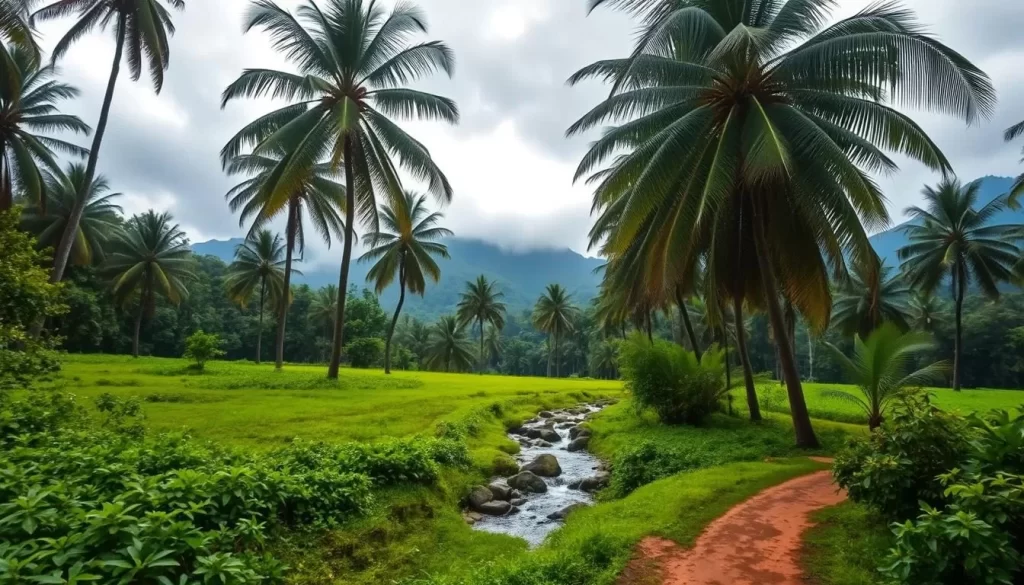
The monsoon season in Andaman offers a unique experience, with its lush landscapes and peaceful atmosphere. By understanding what to expect and being prepared, you can have a rewarding trip.
Conclusion: Making the Most of Your Andaman Trip Whatever the Weather
Your Andaman adventure begins with understanding the best time to visit, ensuring a trip filled with memories. With comprehensive knowledge of the seasonal weather patterns, you can now plan your trip to the Andaman and Nicobar Islands with confidence.
The ideal time to visit Andaman is between October and March, offering the most reliable weather conditions. However, being flexible with your travel dates can also reward you with unique experiences and budget-friendly options during the shoulder season.
The natural beauty of the Andaman Islands, with their pristine beaches, lush forests, and rich marine life, will create lasting memories, regardless of when you visit. Timing your trip thoughtfully enhances every aspect of your Andaman adventure, whether you’re diving among coral reefs or simply relaxing on a beach.
Now, you’re equipped to make the most of your chosen travel period and enjoy the charm of this tropical paradise.
The above is subject to change.
Check back often to TRAVEL.COM for the latest travel tips and deals.
